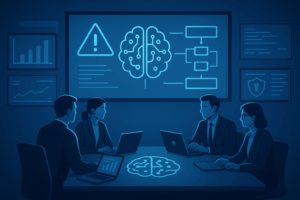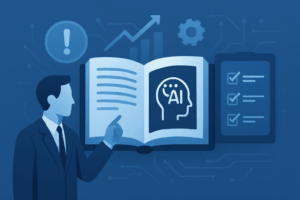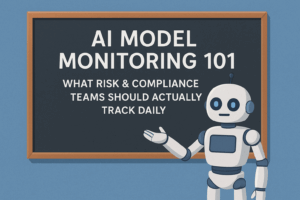Why AI Counts as Insider Threat
Traditional insider threats involve disgruntled employees or compromised credentials. Now, with AI in the picture, every user becomes a potential risk vector—no intent required.
-
- Shadow AI: Teams using unapproved tools (e.g., ChatGPT in finance) can bypass established controls.
-
- Data Leakage: Copying creative assets, code snippets, or strategic plans into AI models exposes them to third parties.
Example:
A developer pastes proprietary logic into Copilot for debugging—the code is stored and possibly used to train external models.

Common Scenarios Illustrating the Risk
- Legal & Compliance Leakage: A legal assistant asks an AI to summarize contracts containing sensitive client PII—risking data disclosure.
- Source Code Exposure: A programmer pastes confidential algorithms into an AI IDE extension—now publicly accessible.
- Unapproved Marketing Inputs: A marketing lead drops internal campaign plans into ChatGPT—potentially exposing product launch schedules.
Why These AI Threats Go Unnoticed
-
- Lack of visibility: Generative AI tools often don’t log user data or are accessed via personal devices.
-
- Perceived harmlessness: Users assume AI tools are safe, not realizing they may store sensitive input.
-
- Bypassing existing protections: AI usage may circumvent firewalls, DLP systems, or administrative oversight.
What Organizations should Do
1. Define and Enforce AI Usage Policies
-
List approved tools and explicitly ban sensitive data sharing (finance, HR, IP).
-
Check out our AI Risk Checklist for policy templates.
2. Detect Shadow AI
-
Monitor network traffic for AI tool usage.
-
Integrate with SIEMs or DLP platforms equipped for AI signals.
3. Train Your Teams
-
Educate staff on how even simple requests to AI can leak confidential data.
-
Use real-world examples to drive the message home.
4. Adopt Secure AI Solutions
-
Deploy enterprise-grade AI platforms with audit trails and access control.
-
Consider internally hosted models when data governance is critical.
Supporting Research &. Frameworks
- AI-Driven Insider Risk Detection – advanced solutions use behavioral analytics and deep clustering to detect insider anomalies in real time
- NIST AI Risk Management Framework – provides guidance on safe and responsible AI
- AI-Driven Insider Risk Detection – advanced solutions use behavioral analytics and deep clustering to detect insider anomalies in real time
The Business Case: Why It Matters
| Risk Type | Example | Impact |
|---|---|---|
| Unintended Exposure | Code or IP in Copilot | IP loss, competitive risk |
| Compliance Breach | PII in AI tools | GDPR/HIPAA penalties |
| Shadow Usage | Finance using unvetted AI services | Regulatory, audit failures |
Conclusion
AI isn’t a future risk—it’s a current one. Left unmanaged, it acts as a stealth insider capable of launching data breaches from within. Treat AI tools like any third-party service: enforce usage policies, maintain visibility, and hold employees accountable. Only then will your organization safely harness AI’s power.




